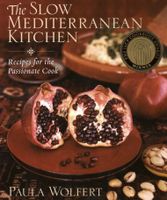Advertisement
Preparation info
- Serves
4 to 6
round - Difficulty
Medium
Appears in
Published 2003
I first heard the expression “winged nostrils” from an Italian chef who was showing me how to roast a pigeon. It was his term for a chef's instinctive olfactory understanding of when a particular dish is done.
Recently I heard an almost identical turn of phrase while attending an outdoor cooking demonstration in a small Turkish village not far from Izmir. The cook was showing me how to prepare a local dish called peynirli bogaca—a. traditional hearth bread made with two unlea


